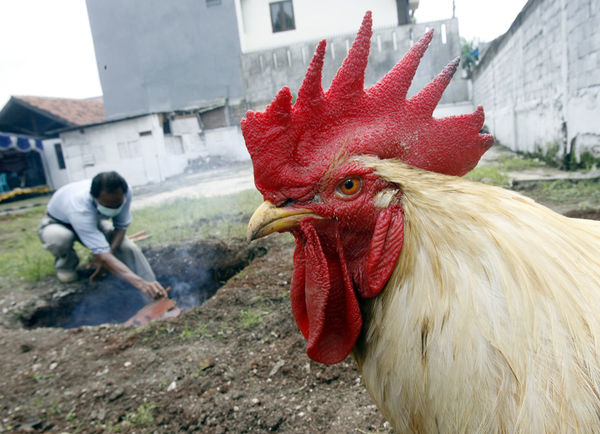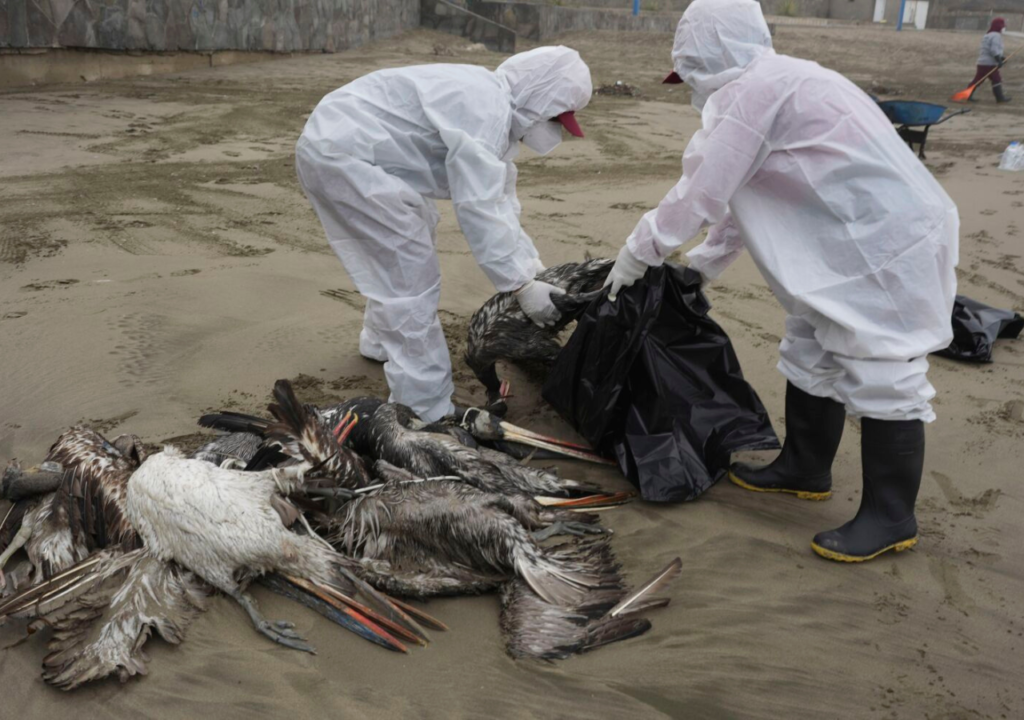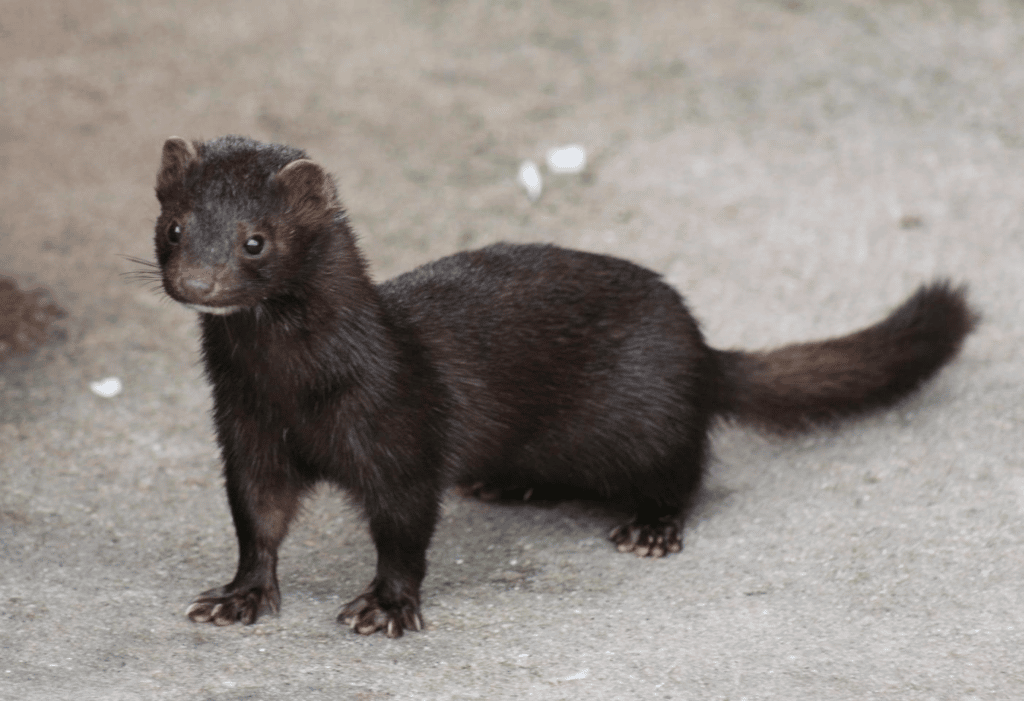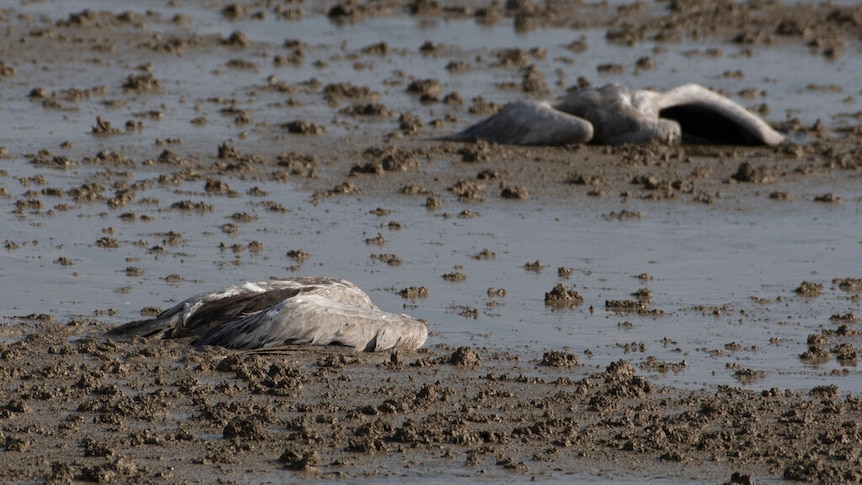Several Nations are Now Contemplating Vaccination because of Avian Flu Pandemic
Some of the most recent victims of the avian flu virus that is circulating worldwide include a mountain lion, a bear, and a skunk.
Scientists are concerned about the highly pathogenic avian influenza (HPAI) strain H5N1.
Since 2021, the virus has spread rapidly and reached all continents with the exception of Australia and Antarctica.
According to Ian Barr, deputy director of the World Health Organization (WHO) Collaborating Centre for Reference and Research on Influenza, the virus is already beginning to spread into South America, something it has never done before.
The problem has gotten so bad that the US Biden Administration and nations in the European Union are now thinking of trying bird vaccinations.
Several nations, including Australia, have been hesitant to immunize poultry in the past due to the possibility of the disease spreading from immunized but asymptomatic fowl to other animals as well as possible trade repercussions.

According to a DAFF (Department of Agriculture, Fisheries and Forestry) official, the Australian government was keeping an eye on the situation abroad and backed immunization once potent and often updated vaccinations were made available.
We advise nations who are now suffering major losses of poultry because of HPAI outbreaks to start immunizing their people, they added.
Australia now forbids regular immunization against avian flu, although this may change in the future.
The statement continued, “We would be advocating our own sector to embrace vaccination if Australia were similarly suffering from or confronting comparable losses.
Why then have things become so bad so quickly? And what steps is Australia taking to stave it off?
The virus itself will be discussed first.
H5N1 Virus Evolution
A number of viruses are to blame for bird flu. The majority of them are low-pathogenic viruses that often infect wild birds and seldom or never cause sickness.
Just a few strains of the H5 and H7 subtypes cause serious illness and death. These highly pathogenic variants originated in poultry, then spread to wild birds before returning to poultry.

According to Marcel Klaassen of Deakin University, who has been observing avian influenza in wild birds for the past 20 years, H5N1 originally emerged in 1996 but didn’t begin to spread globally until 2003.
Then, in 2014, a brand-new lineage debuted in Korea before swiftly spreading to Europe and then North America.
“Then I thought, ‘Oh, man, now the shit has really hit the fan,'” Professor Klaassen said.
Other bird flu outbreaks occurred during the next four years, but none were as severe until the most recent wave, which began in October 2021 and was caused by the 2.3.4.4b variety.
According to Professor Barr, there is now evidence that this variation in North America is consorting with other bird flu viruses, making it even more dangerous.
The fact that there are so many viruses out there and that they have infected so many species is worrying, according to Professor Barr.
Just how awful is bad?
The number of deaths is shocking.
More than 58 million poultry birds in the US alone have perished from H5N1 bird flu in the last year, out of the estimated half a billion poultry birds worldwide.
It’s not just poultry however.
Veterinarians in Spain discovered the virus at a mink farm that killed roughly 52,000 animals the year before, as news reports about turkey shortages in the days leading up to Thanksgiving rang out in the US.
According to Professor Klaassen, the official statistics for wild birds only provide a partial picture of the situation.

“The number of wild birds recorded thus far is 100,000, but I think it’s grossly underestimated.
“It’s in the millions, rather than in the hundreds of thousands reported in the databases.”
In Scotland, gannet colonies have vanished, and the illness has so far claimed the lives of 236 different wild bird species, including bald eagles, vultures, pelicans, and penguins.
Professor Klaassen stated that “We have no clue how our wild birds are actually affected by this present lineage in the Northern Hemisphere,” adding that monitoring of populations in Siberia has been hampered by COVID and the conflict in Ukraine.
We are concerned about the mink farm, but why?
Fears that the virus had adapted to transmit across mammals for the first time were aroused by the outbreak at the mink farm.
“If it is true, it’s concerning because we haven’t seen mammal-to-mammal transmission before,” Professor Barr said.
He said that it was still too early to determine if there had been mammal-to-mammal transmission or whether the minks, who were housed in open sheds, had come into touch with diseased birds.
“Even if it did impact a number of animals, I don’t think you can leap to the conclusion that it was transmissible since there was an epidemic at the mink farm.”
Even before the mink farm pandemic, H5N1 was recognized to infect mammals.

“When this virus first broke nearly 20 years ago, it killed zoo animals like tigers when they were fed carcasses of birds that were infected,” Professor Barr said.
There have been 186 H5N1 outbreaks in animals since January 2021, impacting 17 different species, including foxes, otters, seals, bears, mountain lions, and skunks.
While they go by the moniker “flu,” extremely virulent strains of avian influenza frequently harm mammals’ brains and central nervous systems in addition to their respiratory system.
The risk is that H5N1 might mutate and spread more extensively to humans if it becomes common in animals.
Nonetheless, the WHO reports that the risk from H5N1 to humans is now low. Since 2003, they have counted 868 cases and 457 fatalities.
The number of infections in people has been extremely low, according to Professor Barr, given the quantity of sick wild birds and poultry that have been destroyed, often without the best of intentions.
Although worrying, the situation is not yet a cause for alarm.
Presently, the H7N9 lineage of HPAI is more dangerous for humans.
How are things doing in Australia?
Like it has done elsewhere, H5N1 would kill domestic poultry and wild birds if it invaded Australia. Certain species, like the Australian Black Swan, may go extinct as a result.
Australia has had localized outbreaks of the highly virulent H7N7 influenza, which developed from less dangerous viruses carried by local wild birds.
The most recent in 2020 led to the slaughter of chickens on a number of free-range farms in Victoria.
H5N1 would be more difficult to contain, according to Professor Klaassen, if it infected wild birds.
Fortunately, Australia currently enjoys a geographic advantage.
Large species of ducks that don’t travel to Australia are primarily responsible for spreading avian influenza in Europe, Asia, and North America.
Yet there is a remote possibility that migratory shorebirds might introduce H5N1 to Australia.
The likelihood of a sick bird making it from Siberia to this region would be difficult, but in the last year, the number of viruses spreading around the Northern Hemisphere has increased.

Australia’s risk assessment will be created by Professor Klaassen and his University of Melbourne colleague Michelle Wille.
Even one shorebird migrating with HPAI aboard and landing in Australia might start outbreaks, according to Dr. Wille. “We need to be careful,” he added.
Their study of low pathogenic viruses indicates the species that should be targeted for monitoring as well as the locations and methods by which wild birds may propagate a highly pathogenic virus in Australia.
“We have essentially given ourselves a bit of a head start so that if things kick off, we don’t need to scratch our heads about how to best do surveillance,” she said.
The news is positive thus far. No H5N1 influenza cases have been discovered in migrating shorebirds that arrived before summer.
The absence of this specific strain, according to Professor Klaassen, is extraordinary.
Moreover, there haven’t been any mass fatalities in this area.
Yet when the shorebirds come back the next spring after the Northern Hemisphere mating season, things can alter.
Commercial flocks of chicken are also under surveillance, and the illness is reportable.
“Commercial poultry producers should continue to have appropriate biosecurity measures in place to avoid wild birds coming into contact with their flocks,” the DAFF spokesperson said.
“Strict border control measures and import conditions are also enforced to stop the disease from entering Australia via imported birds and poultry products.”
How well does immunization work?
While the United States and the European Union are currently thinking about immunizing their flocks of chickens, Asia has long practiced the technique.
Because they wish to eradicate any signs of sickness in the community and do not want these diseases to spread, the Western world has traditionally avoided vaccination, according to Professor Barr.
I don’t see any other option, though, unless you have very high biosecurity in your animal husbandry, if this virus is going to stick around and become endemic in some nations.
Asserting that “it’s not looking good until you do something spectacular like immunization,” Professor Klaassen also noted that it must be done properly.
He performed research in Bangladesh that demonstrates immunizations eliminated bird flu symptoms on poultry farms, but the virus still spreads through asymptomatic chickens and is still prevalent in live bird markets and wild birds.
If you don’t also safeguard your wild birds, they become the victim, even though you can easily secure your poultry.
Dr. Wille concurred, stating that immunization decreased chicken industry culling and spillover into other species.
The number of human (and animal) infections will probably decline if we’ve learned anything from the H7N9 epidemics, she added.
Yet, in order to be successful, protective, and correctly delivered, vaccinations must to be followed by post-vaccination observation.
